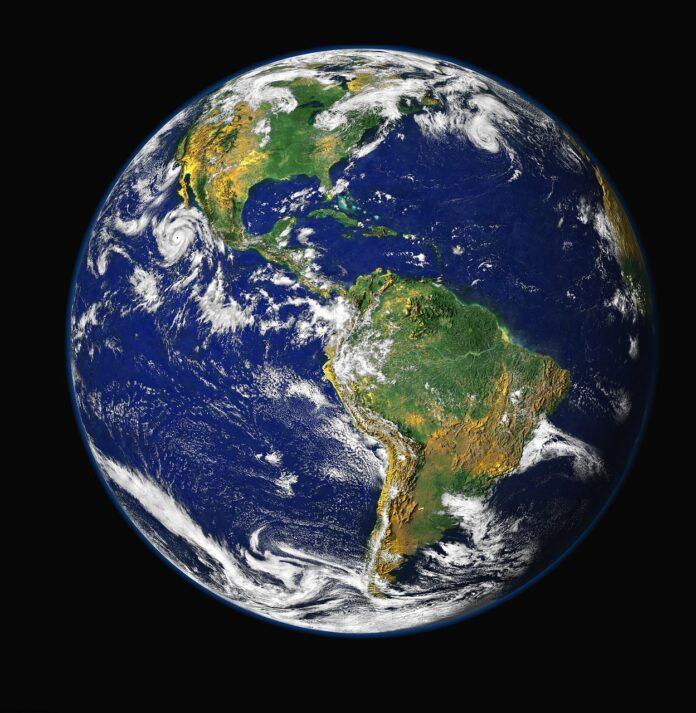The divide between East and West has been exacerbated since the beginning of the war in Ukraine. The world is slowly but surely drifting into a renewed dual-block system. History rhymes indeed. It definitely looks like a new twist of the division between the Western Roman Empire and the Eastern Byzantine Empire or, more obviously, the West and the Soviet bloc during the Cold War. The war in Ukraine is setting the borders for this new world.
Supply chains and logistics are good indicators in times of both peace and war. And it is clear both sides are laser-focused on developing their own routes for sensitive and key supplies, looking to avoid the need to collaborate with or rely on the other side. This is especially true when it comes to advanced and deep technologies. Space represents all of the above. It is logistics, it is advanced technology and it is data and intelligence, as well as sovereignty and high economic stakes.
In space, there is no East or West; there is infinity, yet we are noticing the same separation. After a great epoch of global collaboration post-Cold War, many states have, for the last decade, been planning for a shift and moving toward controlling their own infrastructure in space. Worse, since the war in Ukraine began, we have noticed that the risks for confrontation in space have increased, just as they have on Earth. Consequently, will space stay peaceful? Will it remain a domain of international collaboration, or will we soon see the need for a NATO in space to protect and retain access to assets in orbit?
The risk is real, as press reports have indicated that Pentagon leaders last week discussed China’s and Russia’s space ambitions. Last year, China demonstrated a hypersonic vehicle and a fractional orbital bombardment system. According to reports, this technology was first demonstrated by the Soviet Union in 1969. Also last year, Russia conducted a direct-ascent anti-satellite test, which entailed the voluntary destruction of one of its own defunct satellites. This was in fact a military message wrapped in a test: The capacity to destroy and disrupt. Is this synonymous with an end of global collaboration and of space being a common goal for all of humanity?
The European Space Agency in July formally ended its partnership with Russia on a rover mission to explore the surface of Mars, while the use of Roscosmos launch capacities has also stopped. This applies to the US too, as their astronauts relied for many years on Russia to get to the International Space Station, but now SpaceX has taken over this mission. It is unlikely the collaboration with Russia will get back on track any time soon.
The International Space Station, where the entire world contributes to scientific research and the advancement of technologies, is symbolic of this new direction. With its lifetime coming to an end in 2031, each superpower had been planning for the next phase long before the war in Ukraine. China has been building Tiangong, its own space station. In July, it launched Wentian, the second of three modules dedicated to scientific research that will complete the T-shaped station. The US has chosen the route of privatization and there are actually privately owned companies that are building future space stations.
Private companies have hence become an intricate part of space and security. This is especially true when it comes to data imagery from the satellites of companies such as Planet Labs, which are presenting key security information on military sites and movements all over the world. The same applies to America’s unmanned naval drones made by Saildrone, two of which were this month briefly seized in the Red Sea by Iran’s Islamic Revolutionary Guard Corps and reportedly returned without their cameras.
Nevertheless, this change is not solely security-driven; it is a clear sign of the booming potential of the space economy, which, according to Morgan Stanley, will reach $1 trillion in 2040. Each nation wants to protect or advance the interests of its own companies and create self-sufficient in-orbit infrastructure and mobility capacities. This is particularly so when there are large public contracts awarded, which is a big drive for the industry. The economic returns from space companies, with the potential for commercialization and commoditization, are limitless.
And so, we can better understand why space might be an area of potential conflict, as countries become dependent on it for communications, data, intelligence and economic returns. Despite this, it is important for all to continue abiding by the Outer Space Treaty of 1967 to ensure safe, transparent and responsible behavior in space. The Artemis Accords, which build on this treaty, are important. These peaceful principles are why the US will introduce a resolution at the UN General Assembly this month calling for a halt on direct-ascent anti-satellite testing. The debris that results from these tests could become a major issue for sustainability in space.
In the much longer term, the new race for the moon encompasses both opportunities and the risk of confrontation. Unfortunately, it is difficult to imagine Earth being divided between East and West while countries collaborate in space. It is also difficult to imagine a global conflict on Earth not extending to space in the future. In a sense, we have already divided infinity with politics.




